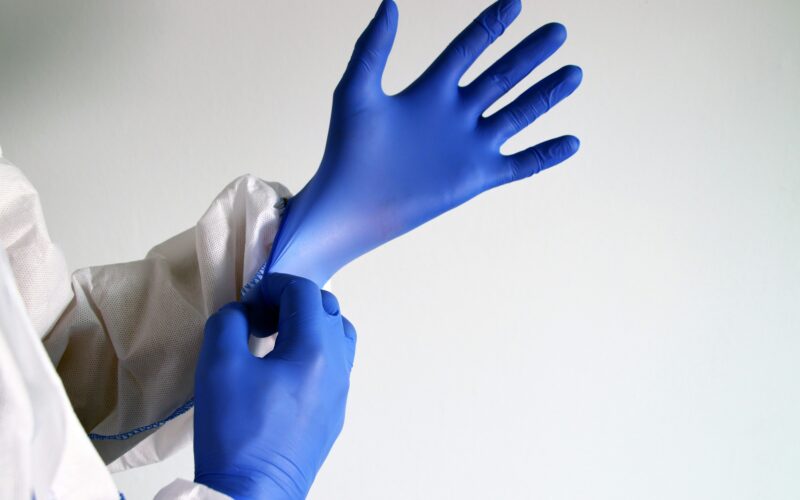Kala Pharmaceuticals Inc. (NASDAQ:KALA) is a clinical-stage biopharmaceutical company dedicated to developing and commercializing innovative therapies for rare and severe diseases of the eye. Headquartered in Arlington, Massachusetts, the company has strategically positioned itself at the forefront of ophthalmology by focusing on diseases with high unmet need, particularly those that can lead to permanent vision impairment or blindness. Since its inception, Kala has sought to build a differentiated pipeline by leveraging proprietary science aimed at addressing impaired corneal healing and other complex ocular disorders where few, if any, effective treatments exist.
At the core of Kala’s approach is its proprietary mesenchymal stem cell secretome (MSC-S) platform. This technology harnesses a unique combination of human-derived biofactors such as growth factors, protease inhibitors, matrix proteins, and neurotrophic factors, which together target multiple pathways involved in corneal healing. By taking a multifactorial approach, Kala aims to offer therapies that can address not just a single cause, but the broad range of underlying etiologies responsible for severe ocular conditions. This sets the company apart from other biotech firms that often focus on narrower, single-pathway treatments.
KALA’s lead candidate, KPI-012, is a human MSC-S therapy currently in clinical development for Persistent Corneal Epithelial Defect (PCED), a rare condition characterized by non-healing corneal wounds that are resistant to conventional therapies. If untreated, PCED can result in serious complications such as infection, scarring, corneal perforation, and significant vision loss. KPI-012 has already received Orphan Drug and Fast Track designations from the U.S. Food and Drug Administration, underscoring its potential to address an important and underserved patient population. With an estimated 100,000 PCED cases annually in the U.S. alone, the market opportunity is meaningful despite the condition’s rarity, given the absence of any broadly indicated FDA-approved treatments.
Beyond PCED, Kala is actively exploring additional indications for KPI-012 and its broader MSC-S platform. These include Limbal Stem Cell Deficiency, another rare front-of-the-eye disease that can cause recurrent epithelial breakdown and loss of corneal clarity, as well as preclinical programs for inherited retinal degenerative diseases such as Retinitis Pigmentosa and Stargardt Disease. Through these programs, Kala is pursuing a strategy that combines near-term clinical opportunities with longer-term pipeline expansion, potentially creating a diverse portfolio of therapies aimed at vision preservation.
Kala has also built a reputation for advancing ophthalmic science through carefully designed clinical trials. The company is currently conducting the CHASE (Corneal Healing After SEcretome therapy) Phase 2b trial of KPI-012 for PCED, with topline data expected in the third quarter of 2025. Success in this trial could allow it to serve as the first of two pivotal studies required to support a Biologics License Application submission. At the same time, Kala is preparing for global expansion of its trials, having already activated clinical sites in Latin America to broaden the geographic reach of its development programs.
Financially, Kala continues to face the challenges common to early-stage biotech firms, operating at a net loss as it invests heavily in research and development. As of March 31, 2025, the company reported $42.2 million in cash and cash equivalents, which is expected to fund operations into the first quarter of 2026. While this provides a limited window for execution, Kala has historically relied on strategic partnerships, grants, and financing to extend its runway and maintain progress in its programs. The company’s management team, led by interim CEO Todd Bazemore, has emphasized that near-term priorities revolve around delivering clinical milestones, particularly the KPI-012 topline readout.
Ultimately, Kala Pharmaceuticals has built its identity around pioneering vision-saving therapies for patients with rare and severe ocular conditions. Its platform science, regulatory designations, and focused pipeline give it a unique position within the biotech landscape, though its future depends heavily on the success of KPI-012 and its ability to translate scientific innovation into regulatory approval and commercial viability.
Dependence on KPI-012 and the CHASE Trial Creates Binary Risk
The future of Kala Pharmaceuticals is almost entirely tied to KPI-012 and the outcome of the Phase 2b CHASE trial for PCED. Management has stated that topline results are expected in the third quarter of 2025, and that a successful trial could serve as the first of two pivotal studies needed for a Biologics License Application submission. This means that the entire valuation of Kala hinges on a single clinical readout. If the CHASE trial does not meet endpoints, or if regulators demand more extensive data before considering approval, Kala could face a catastrophic setback with few alternatives in its pipeline ready to step in. This binary risk amplifies volatility for investors and creates an asymmetric downside scenario where one trial could determine the survival of the company.

CHECK THIS OUT: Exact Sciences (EXAS) Just Made Cancer Detection 100x Easier! and Soleno Therapeutics (SLNO): The Biotech Company That Could Make You Rich.
Open Questions About Efficacy and Translational Value
Although KPI-012 is positioned as a therapy with a multifactorial mechanism of action, containing growth factors, protease inhibitors, and neurotrophic factors designed to aid corneal healing, the company’s claims remain largely unproven at scale. Early data may be promising, but the ophthalmology space has a history of therapies showing benefit in small studies only to fail in larger, more rigorous trials. Investors should be wary of overconfidence in early readouts or mechanistic rationale when actual clinical validation is still pending. Even if KPI-012 shows modest efficacy, regulators and clinicians may question whether the results are robust enough to warrant approval for a broad PCED indication, especially considering the heterogeneity of underlying causes.
Financial Strain and Cash Burn Amplify Risk
Kala’s financial results highlight the precarious situation it finds itself in. As of March 31, 2025, the company reported $42.2 million in cash and cash equivalents, a decline from $51.2 million at year-end 2024. Based on its own guidance, this runway will only fund operations into the first quarter of 2026. For a biotech dependent on ongoing trials, regulatory filings, and potential commercialization build-out, this is an extremely limited financial cushion. Operating losses for the first quarter totaled $10.7 million, with a net loss of $8.9 million or $1.41 per share. While R&D and G&A expenses showed modest declines compared to the prior year, the burn rate remains unsustainable without additional financing. This means that even if the CHASE trial is successful, Kala will almost certainly need to raise more capital, likely through dilutive share offerings that could significantly erode shareholder value.
Growing Debt Burden and Weak Balance Sheet
Beyond its shrinking cash reserves, Kala also carries a troubling debt load. As of March 2025, the company reported over $15 million in current portion of long-term debt and another $15 million net in longer-term borrowings. Stockholders’ equity has declined sharply from $12.3 million at year-end 2024 to just $5.7 million in March 2025. This weakening balance sheet adds financial pressure and limits flexibility in pursuing its research pipeline. With equity deteriorating and debt obligations increasing, Kala’s financial foundation looks increasingly unstable, raising questions about its ability to support large-scale pivotal trials without external funding.
Competition and Market Timing Create Additional Headwinds
Even if Kala successfully brings KPI-012 to market, the competitive landscape in ophthalmology remains fierce. Larger pharmaceutical companies with deeper pockets and broader distribution networks are continuously exploring treatments for rare and orphan eye diseases. Kala’s small size and limited resources leave it vulnerable to being outpaced in development timelines or outcompeted in market access strategies. Furthermore, the potential market for PCED, estimated at 100,000 patients in the U.S., is relatively niche compared to more mainstream indications. This raises questions about whether Kala can generate sufficient revenue to justify its R&D and commercialization investments.
Overreliance on Platform Narrative
Kala frequently highlights its MSC-S platform as having broad potential for rare front-of-the-eye and retinal degenerative diseases. The company has outlined plans to pursue indications such as Limbal Stem Cell Deficiency and gene-agnostic therapies for conditions like Retinitis Pigmentosa and Stargardt Disease. While this sounds compelling, these programs remain in preclinical or early exploratory stages. Investors should recognize that such platform stories are often aspirational and are used to maintain investor enthusiasm, even when near-term success depends entirely on a single late-stage candidate. Until clinical proof of concept is delivered across multiple programs, the platform narrative should be treated with caution rather than certainty.
Mixed Sentiment and High Volatility Risk
Market sentiment surrounding Kala is divided. While management projects confidence in its clinical milestones, analysts and investors remain cautious. The company’s small market capitalization, currently under $60 million, means any trial update—positive or negative—will have an outsized effect on stock performance. Technical indicators in recent months have flashed bearish patterns, with signals like the KDJ Death Cross and Bearish Marubozu pointing to momentum shifts against the stock. Given the speculative nature of small-cap biotech investing, the downside risks far outweigh the limited upside, especially when the company is so heavily leveraged to one clinical outcome.
Conclusion: Kala Stock Faces a Precarious Road Ahead
Kala Pharmaceuticals continues to promote itself as a pioneer in rare eye diseases, with KPI-012 as its flagship candidate and its MSC-S platform as the foundation for future pipeline expansion. Yet behind the optimism lies a stark reality: Kala’s financial resources are dwindling, its future is entirely tied to a single Phase 2b trial, its balance sheet is weakening, and competition in the ophthalmic space is intensifying. Unless KPI-012 delivers overwhelmingly positive data and gains clear regulatory momentum, Kala’s prospects may deteriorate rapidly. Investors must weigh the speculative promise of potential breakthroughs against the very real possibility of dilution, insolvency, or outright failure.
For risk-averse investors, Kala remains an extremely high-risk play where the bearish thesis is supported by cash constraints, clinical uncertainty, and structural vulnerabilities in both operations and strategy.
READ ALSO: Johnson & Johnson (JNJ) can be the Next Trillion-Dollar Stock and Boston Scientific (BSX) Just Signed a $45M Deal—Here’s What It Means for Investors.








